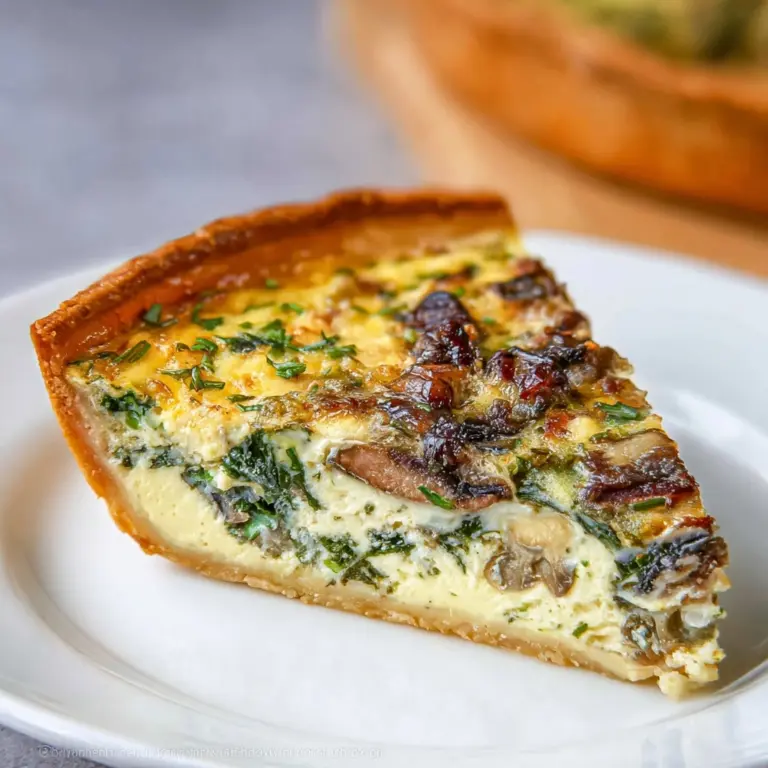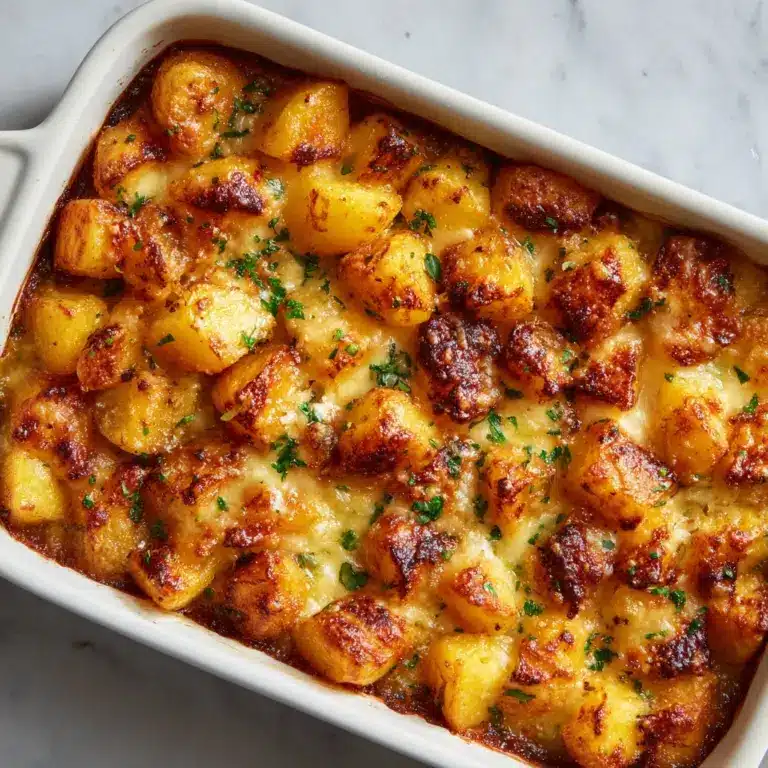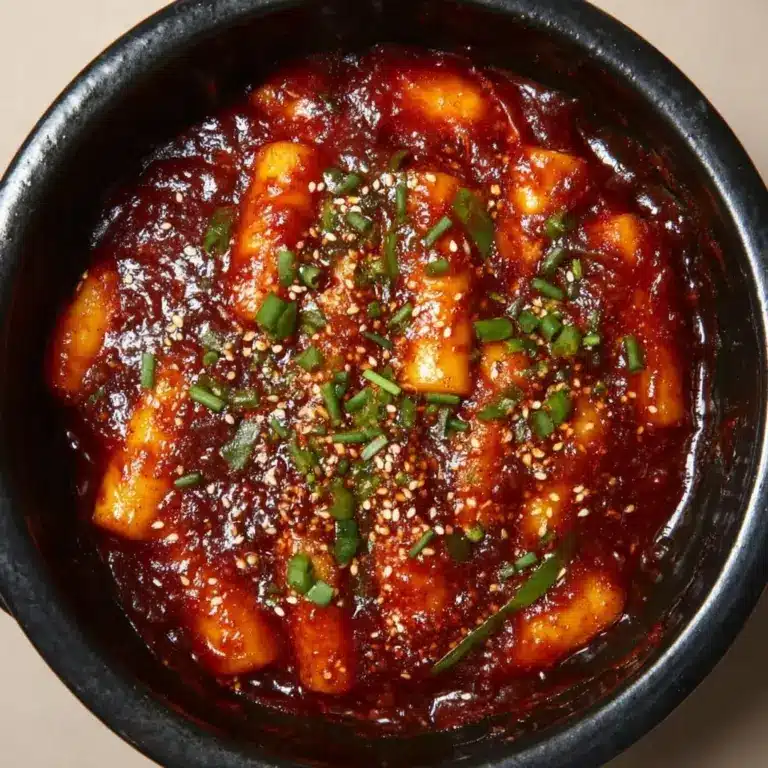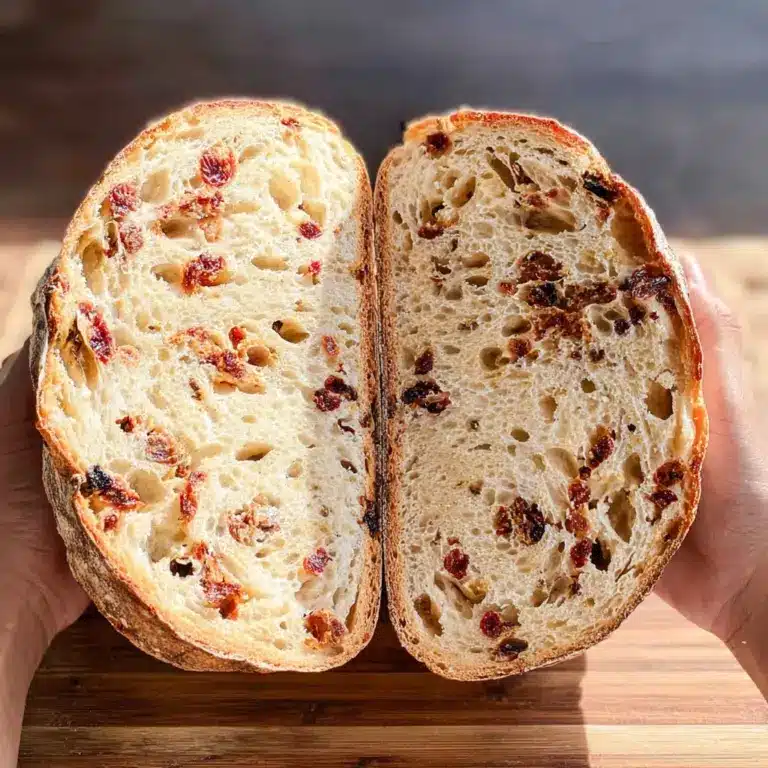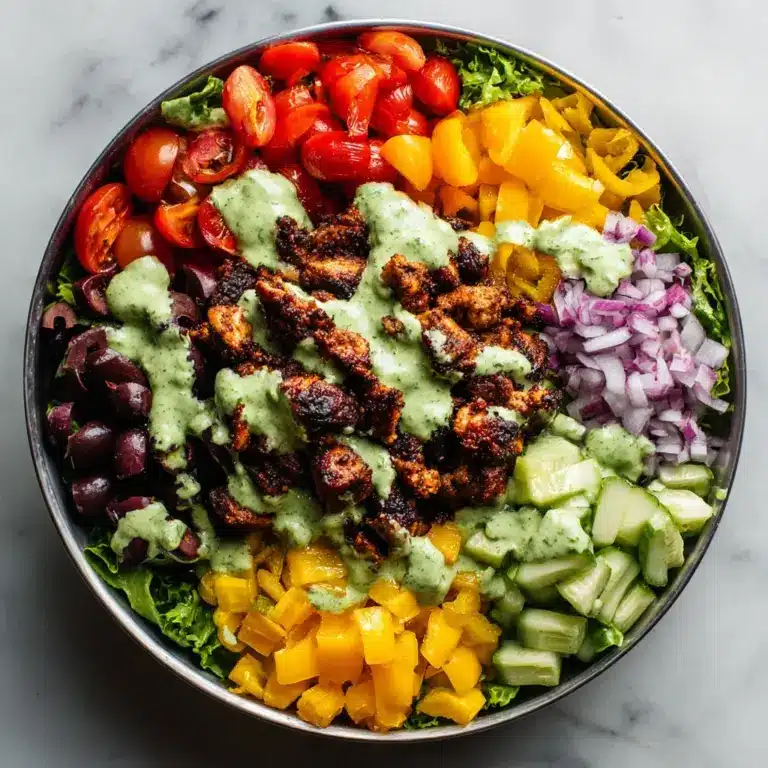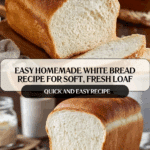How to Make Fresh Homemade Bread Recipe
If you’ve ever dreamed of filling your kitchen with the irresistible aroma of freshly baked bread, you’re in the right place. This guide on How to Make Fresh Homemade Bread breaks down the magic of baking a soft, tender white loaf from scratch. Whether you’re a complete beginner or just want to refine your skills, there’s nothing more rewarding than tearing into a warm slice of bread you created yourself. Let me take you through everything you need to know to create this comforting staple that’s perfect for sandwiches, toast, or just slathered with butter.
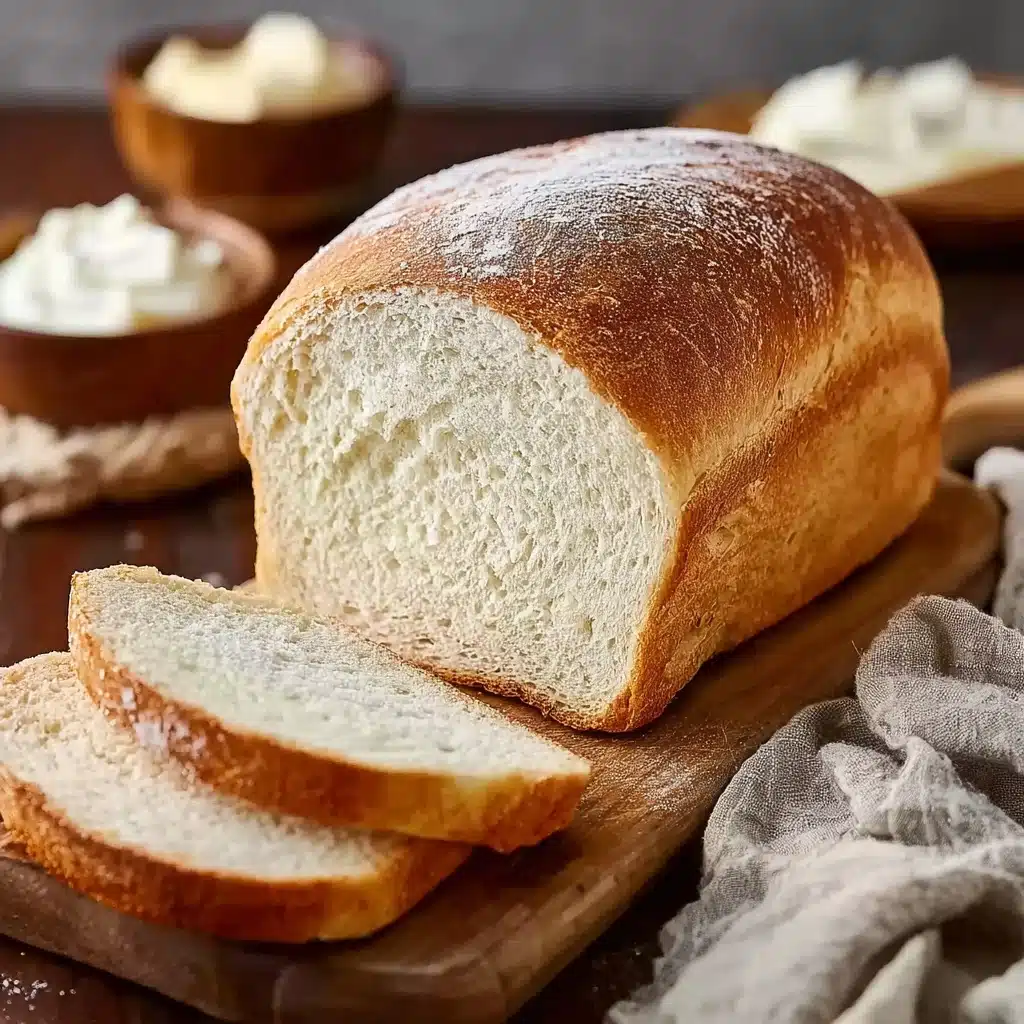
Ingredients You’ll Need
The beauty of this recipe lies in its simplicity. Each ingredient plays a vital role, building flavor, encouraging the perfect rise, and giving your bread its classic soft texture and golden crust. Don’t let the modest list fool you — these staples come together to create something truly magical.
- All-purpose flour (4 cups): The backbone of your bread, providing structure and the soft, chewy texture you crave.
- Active dry yeast (2 teaspoons): The living organism that makes your dough rise into that airy, fluffy loaf.
- Sugar (2 tablespoons): Feeds the yeast and adds a subtle touch of sweetness to balance the flavor.
- Salt (1 teaspoon): Enhances flavor and keeps the yeast’s growth in check, ensuring a perfect rise.
- Warm water (1 ½ cups, about 110°F/43°C): Activates the yeast and helps everything meld together beautifully.
- Vegetable oil (2 tablespoons): Keeps the bread soft and tender, adding a lovely richness.
- Butter (for greasing): Prevents sticking and adds a subtle buttery aroma during baking.
How to Make How to Make Fresh Homemade Bread
Step 1: Activate the Yeast
Start your journey by combining warm water with sugar in a small bowl. Sprinkle in the active dry yeast and watch as it transforms over 5 to 10 minutes into a bubbly, frothy mixture. This step proves the yeast is alive and ready to work its magic, guaranteeing your bread will rise beautifully.
Step 2: Mix the Dough
In a big bowl, whisk together all your dry ingredients — flour and salt. Create a well in the middle and pour in your yeast mixture alongside the vegetable oil. Stir until all parts come together into a sticky dough. This is where your bread starts taking form, so don’t rush the process.
Step 3: Knead the Dough
Transfer the dough onto a floured surface and knead with love for 8 to 10 minutes. The kneading process develops gluten, which gives the bread that perfect chewy texture. The dough should become smooth and elastic but stay slightly tacky. Add a bit more flour or water if you need to balance the texture — this step is key to success.
Step 4: Let the Dough Rise
Place your dough in a greased bowl and coat it lightly with oil to prevent drying. Cover the bowl with a towel or plastic wrap and let it rest in a warm spot for about 1 to 1.5 hours, until it doubles in size. This rise is what transforms the dough into soft bread that’s light as a cloud.
Step 5: Shape the Dough
Gently punch down your risen dough to release trapped air bubbles, then shape it into a loaf by rolling it into a log. Place it carefully in a greased loaf pan, pinching any seams so it keeps its shape while baking.
Step 6: Let the Dough Rise Again
Cover the shaped dough and let it rise once more for 30 minutes or until it creeps just above the pan’s edge. This final rise produces a beautifully plump loaf that will bake up perfectly.
Step 7: Bake the Bread
Preheat your oven to 350°F (175°C). Bake your loaf for 25 to 30 minutes until the top gleams golden brown and the bread sounds hollow when tapped underneath. If you’re using a thermometer, look for an internal temperature around 190°F (88°C) to know it’s done.
Step 8: Cool the Bread
Transfer the bread onto a wire rack after a short 10-minute rest in the pan. Cooling fully before slicing ensures the texture sets right, preventing a gummy or doughy crumb inside. This step is worth the patience!
How to Serve How to Make Fresh Homemade Bread
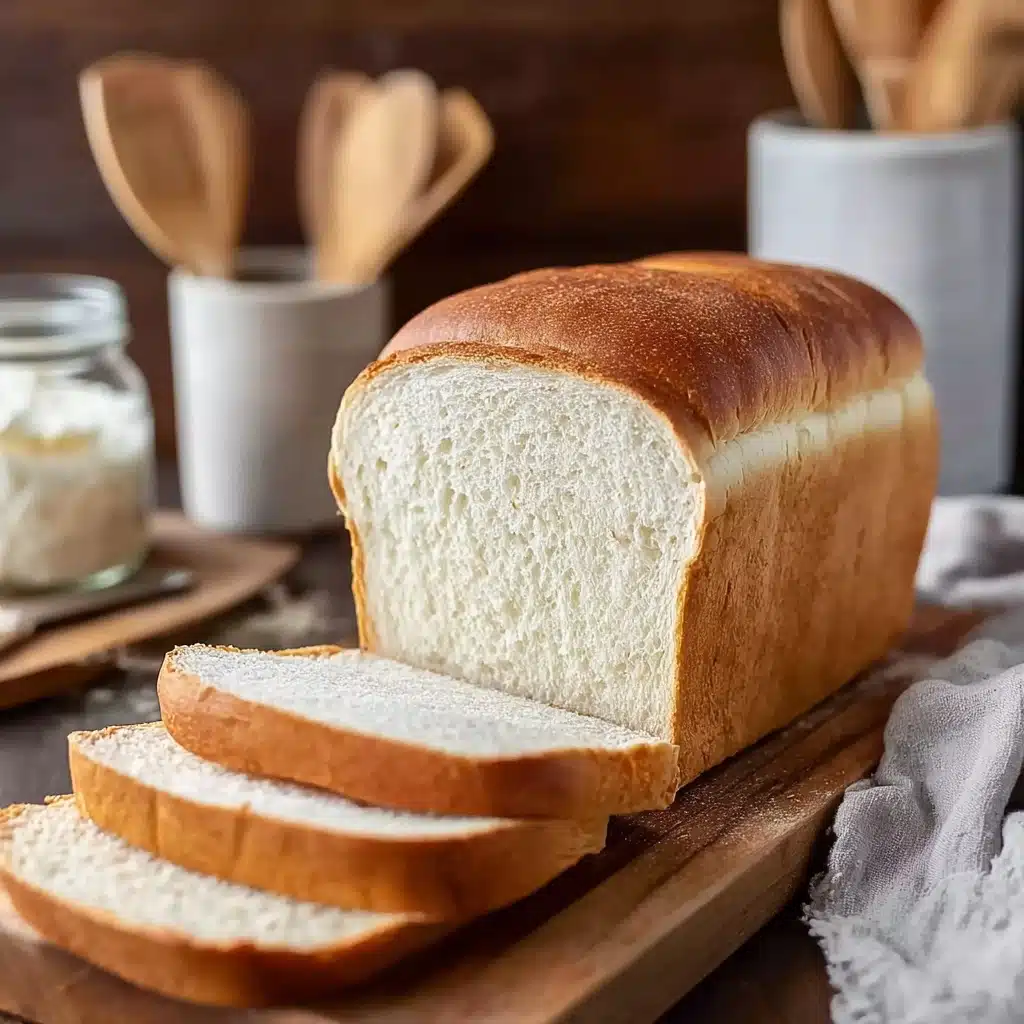
Garnishes
A warm slice of fresh homemade bread is a canvas begging for delicious accents. Try brushing the warm crust with melted butter for a soft shine and added richness, or sprinkle coarse sea salt and herbs before baking to add an irresistible touch.
Side Dishes
This bread is incredibly versatile alongside so many dishes. Serve it with stews, soups, or hearty salads to soak up every drop of flavor. Cold cuts, cheeses, or even a fresh tomato and basil salad make the perfect companions for sandwiches.
Creative Ways to Present
Take your baking to the next level by slicing thick for rustic toast, making garlic bread with butter, garlic, and herbs, or cut into cubes for homemade croutons. You can even turn this dough into rolls or twists for a fun bread basket centerpiece!
Make Ahead and Storage
Storing Leftovers
After enjoying your fresh loaf, store any leftovers in an airtight container or resealable bag at room temperature to keep the bread soft and fresh for up to four days. Avoid refrigeration, which can dry bread out faster.
Freezing
If you want to stretch your baking efforts, slice your bread, wrap each piece or the whole loaf in plastic wrap, then seal in a freezer-safe bag. Your homemade bread keeps beautifully in the freezer for up to three months and is ready to be toasted or thawed on demand.
Reheating
Bring life back to frozen or day-old bread by toasting or warming in a 350°F (175°C) oven for about 10 minutes. This will revive the crust’s crispness and soften the interior for that freshly baked feel.
FAQs
Can I use bread flour instead of all-purpose flour?
Absolutely! Bread flour has a higher protein content, which can give your bread a chewier texture and better rise. However, all-purpose flour works wonderfully and makes the bread slightly softer.
Why did my bread not rise properly?
Common reasons include using water that’s too hot or too cold, expired yeast, or not allowing enough rising time. Make sure your water is warm (about 110°F) and use fresh yeast for best results.
Can I add flavorings like herbs or garlic to the dough?
Definitely! Adding fresh herbs, garlic, cheese, or seeds to the dough before the first rise can give your bread a delicious twist and make it perfect for savory snacks or meals.
How do I know when the bread is fully baked?
Besides the golden crust, tapping the bottom should produce a hollow sound. Using a food thermometer, the internal temperature should reach around 190°F (88°C).
Is kneading essential, or can I skip it?
Kneading is key to developing gluten, which provides structure and chewiness. Skipping or under-kneading can result in dense, crumbly bread. If you’re short on time, consider using a stand mixer with a dough hook to knead.
Final Thoughts
Baking bread from scratch is one of life’s simple pleasures, and learning How to Make Fresh Homemade Bread can transform your kitchen into a comforting bakery each day. With just a few basic ingredients and a little patience, you’ll experience the joy of creating your own fresh, fluffy loaf. So go ahead—give it a try, and enjoy every warm, delicious slice!
Print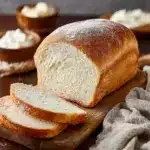
How to Make Fresh Homemade Bread Recipe
- Total Time: 2 hours
- Yield: 1 loaf (about 12 slices) 1x
- Diet: Vegetarian
Description
Learn how to make fresh homemade white bread dough from scratch with this simple and easy recipe. Perfectly soft and fluffy, this homemade white bread is great for sandwiches, toast, or enjoying with butter. Perfect for beginners, this recipe will have you baking bakery-quality bread right at home with minimal ingredients and effort.
Ingredients
Dry Ingredients
- 3 1/2 cups all-purpose flour
- 1 tablespoon sugar
- 1 tablespoon active dry yeast
- 1 1/2 teaspoons salt
Wet Ingredients
- 1 1/4 cups warm water (110°F/43°C)
- 2 tablespoons olive oil (or vegetable oil)
Others
- Butter or oil for greasing the bowl and loaf pan
Instructions
- Activate the Yeast: In a small bowl, combine the warm water and sugar. Sprinkle the active dry yeast over the water and let it sit for 5-10 minutes until it becomes frothy and bubbly. This confirms the yeast is active.
- Mix the Dough: In a large bowl, mix the all-purpose flour and salt together. Make a well in the center, then pour in the yeast mixture and olive oil. Stir with a wooden spoon until the ingredients begin to come together into a sticky dough.
- Knead the Dough: Turn the dough onto a lightly floured surface. Knead by folding and pushing the dough with the heel of your hands for about 8-10 minutes until it becomes smooth and elastic. Add a little flour if too sticky or a small amount of water if too dry.
- Let the Dough Rise: Place the kneaded dough in a lightly greased bowl, turning once to coat. Cover with a damp towel or plastic wrap and leave in a warm place for 1 to 1.5 hours until the dough doubles in size.
- Shape the Dough: Punch down the risen dough gently to release air bubbles. Transfer to a floured surface and shape it into a loaf by rolling into a log shape. Place the shaped dough into a greased loaf pan and pinch seams to seal.
- Let the Dough Rise Again: Cover the loaf pan with a towel or plastic wrap. Allow the dough to rise for about 30 minutes or until it rises slightly above the pan’s rim.
- Bake the Bread: Preheat the oven to 375°F (190°C). Bake the loaf for 25-30 minutes until golden brown and the bread sounds hollow when tapped at the bottom. The internal temperature should reach 190°F (88°C) for a fully baked bread.
- Cool the Bread: Remove the bread from the oven and let it cool in the pan for 10 minutes. Then transfer to a wire rack to cool completely before slicing to ensure perfect texture.
Notes
- Brush the top of the loaf with melted butter immediately after baking for a softer crust.
- You can make rolls instead of a loaf by dividing the dough into smaller portions before the second rise.
- This dough can be stored in the refrigerator for up to 3 days after the first rise if preparing ahead.
- Use warm water (around 110°F/43°C) to activate yeast properly; avoid hot temperatures that kill yeast or cold water that inhibits activity.
- Knead the dough fully for the best texture – under-kneading results in dense bread.
- Prep Time: 20 minutes
- Cook Time: 30 minutes
- Category: Bread
- Method: Baking
- Cuisine: American
Nutrition
- Serving Size: 1 slice (about 1/12 of loaf)
- Calories: 120
- Sugar: 1g
- Sodium: 150mg
- Fat: 2g
- Saturated Fat: 0g
- Unsaturated Fat: 2g
- Trans Fat: 0g
- Carbohydrates: 23g
- Fiber: 1g
- Protein: 3g
- Cholesterol: 0mg
Keywords: white bread dough, homemade bread, easy bread recipe, yeast bread, bread for beginners, soft white bread, baking bread at home

